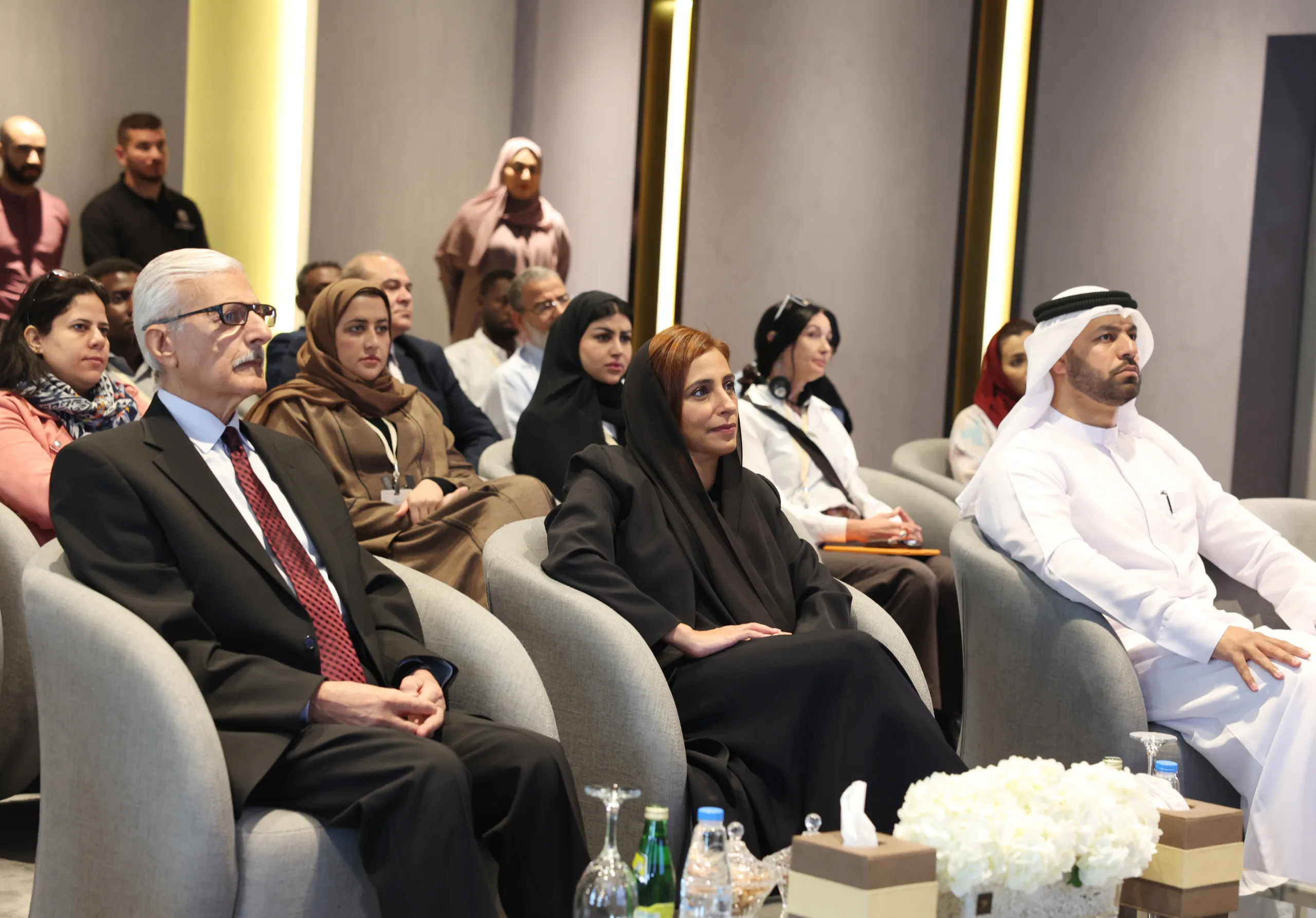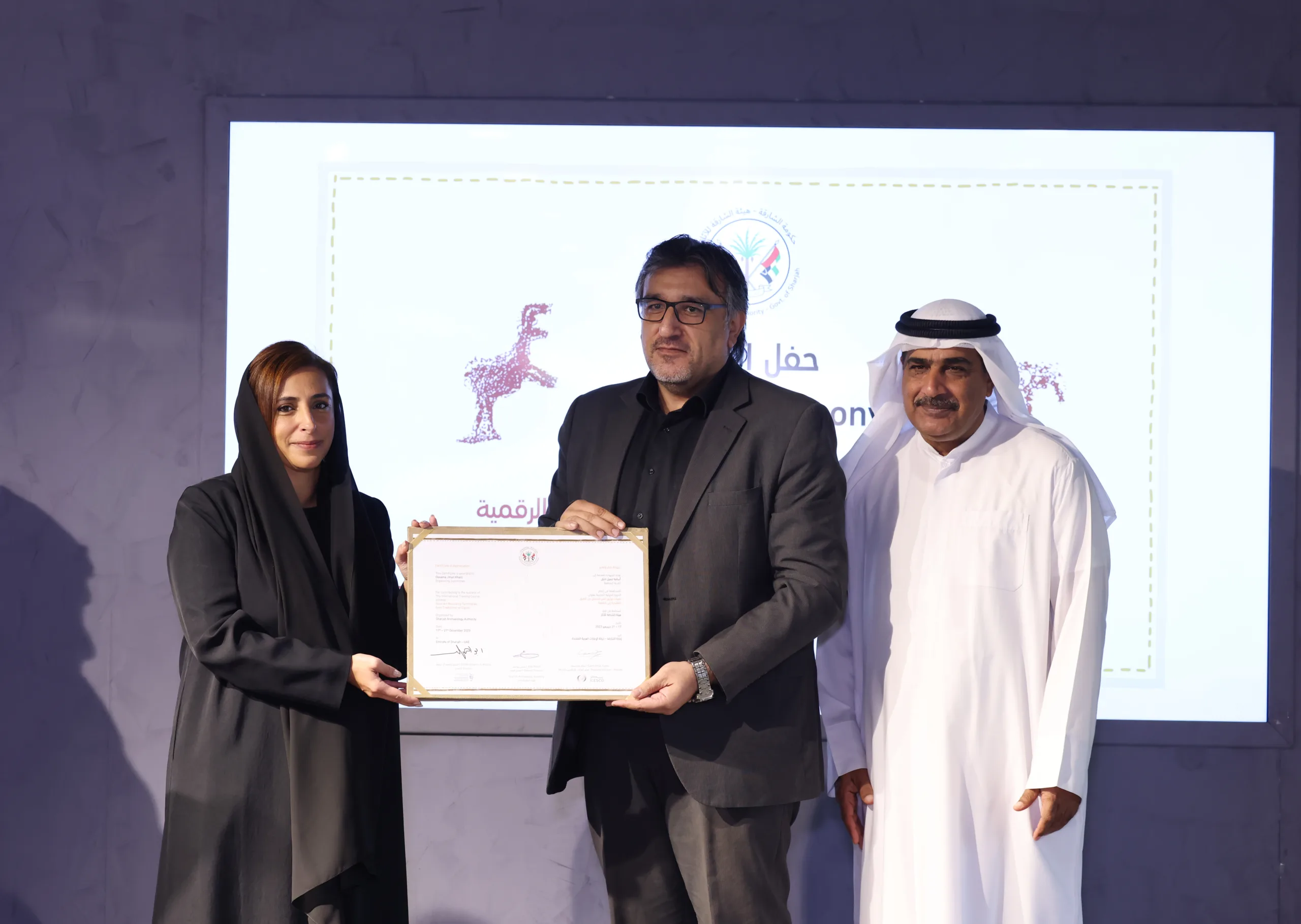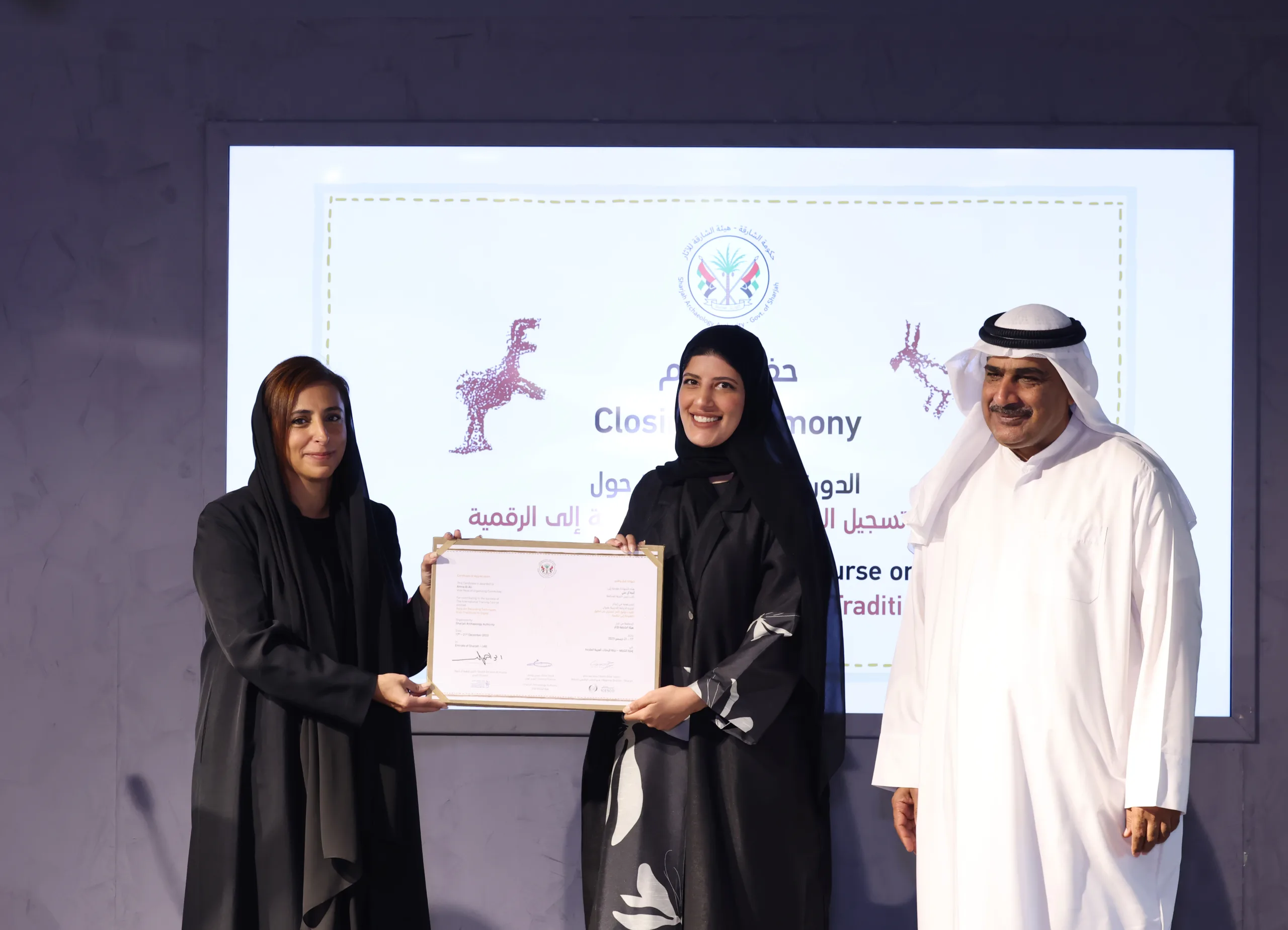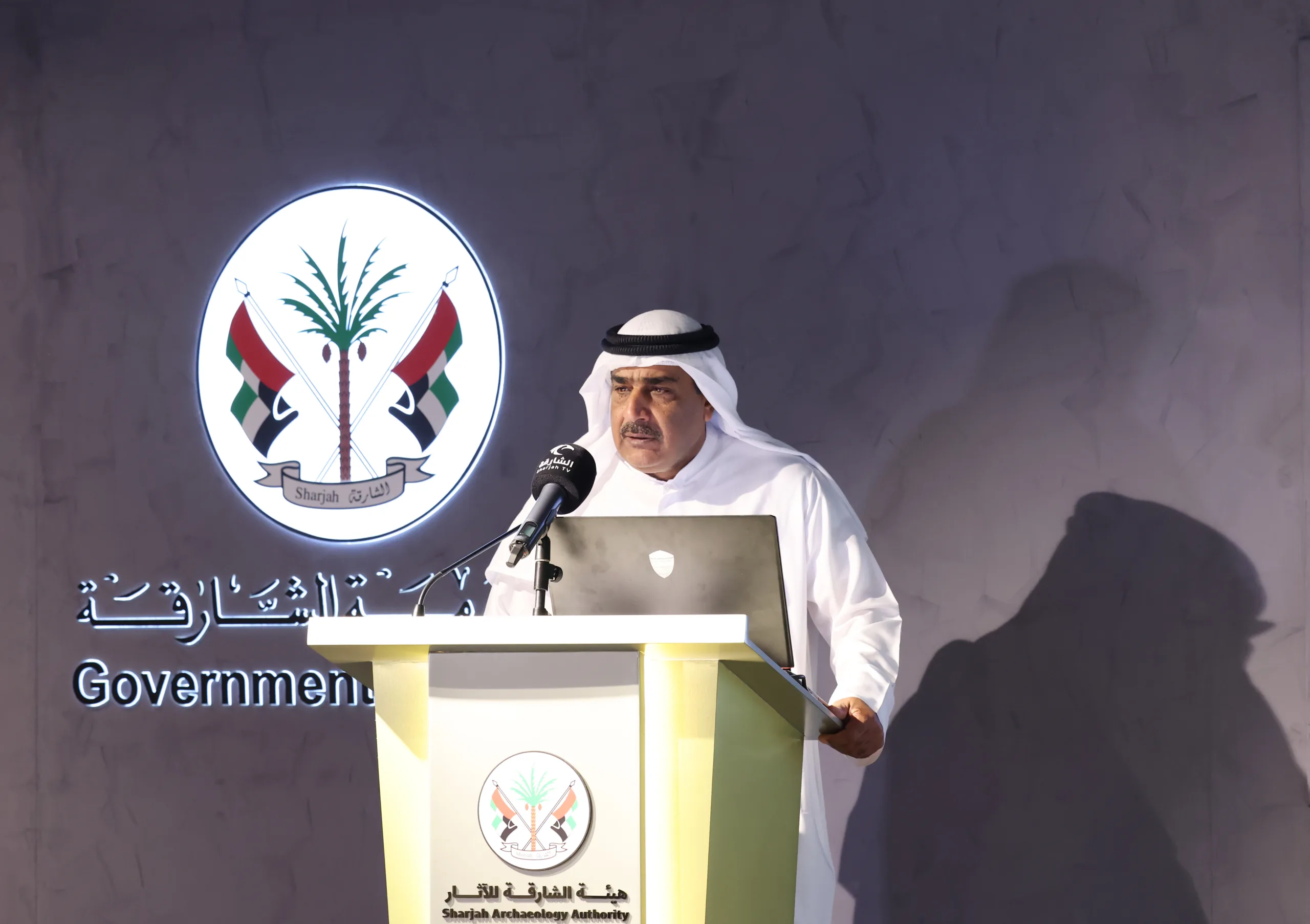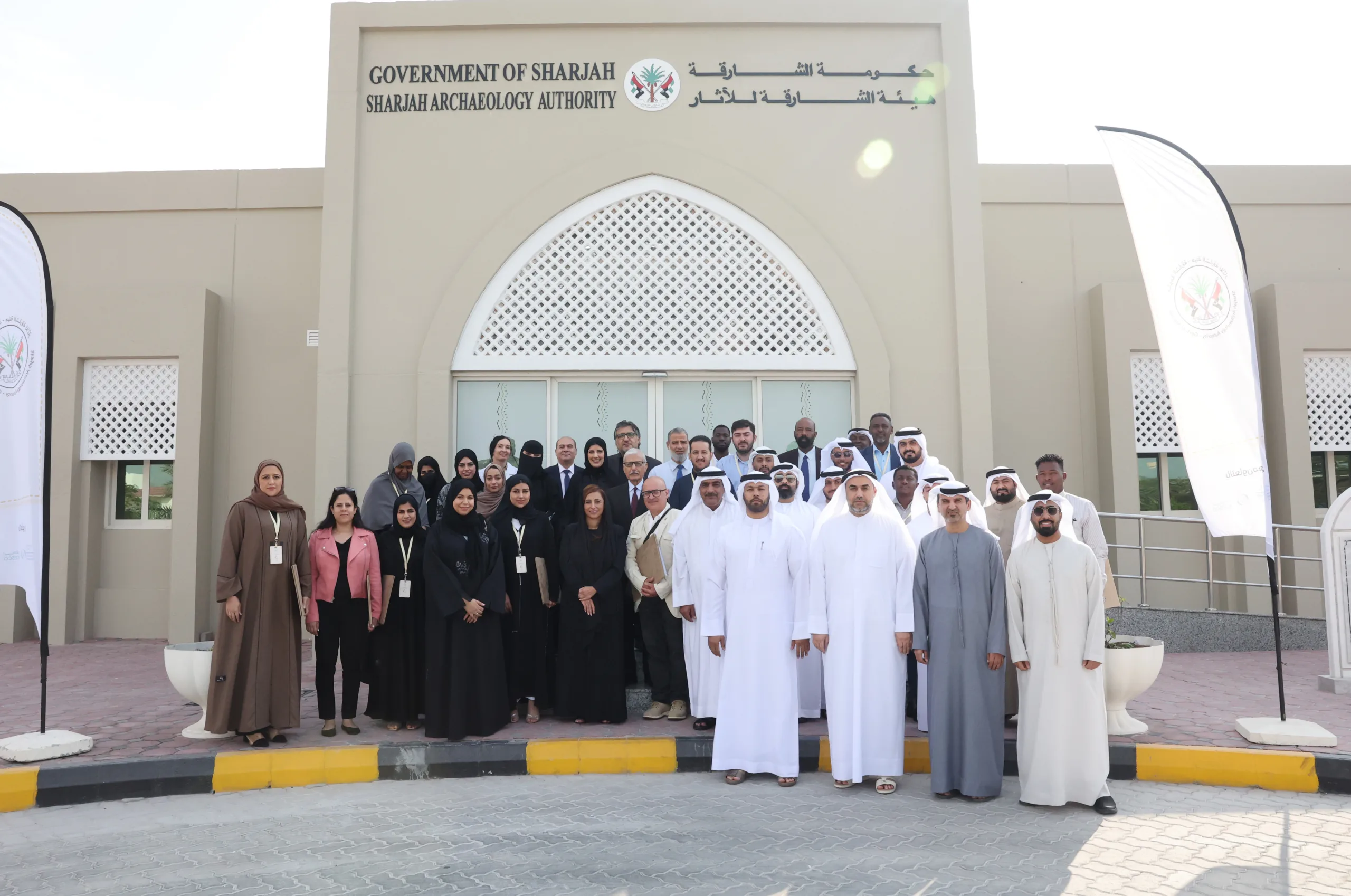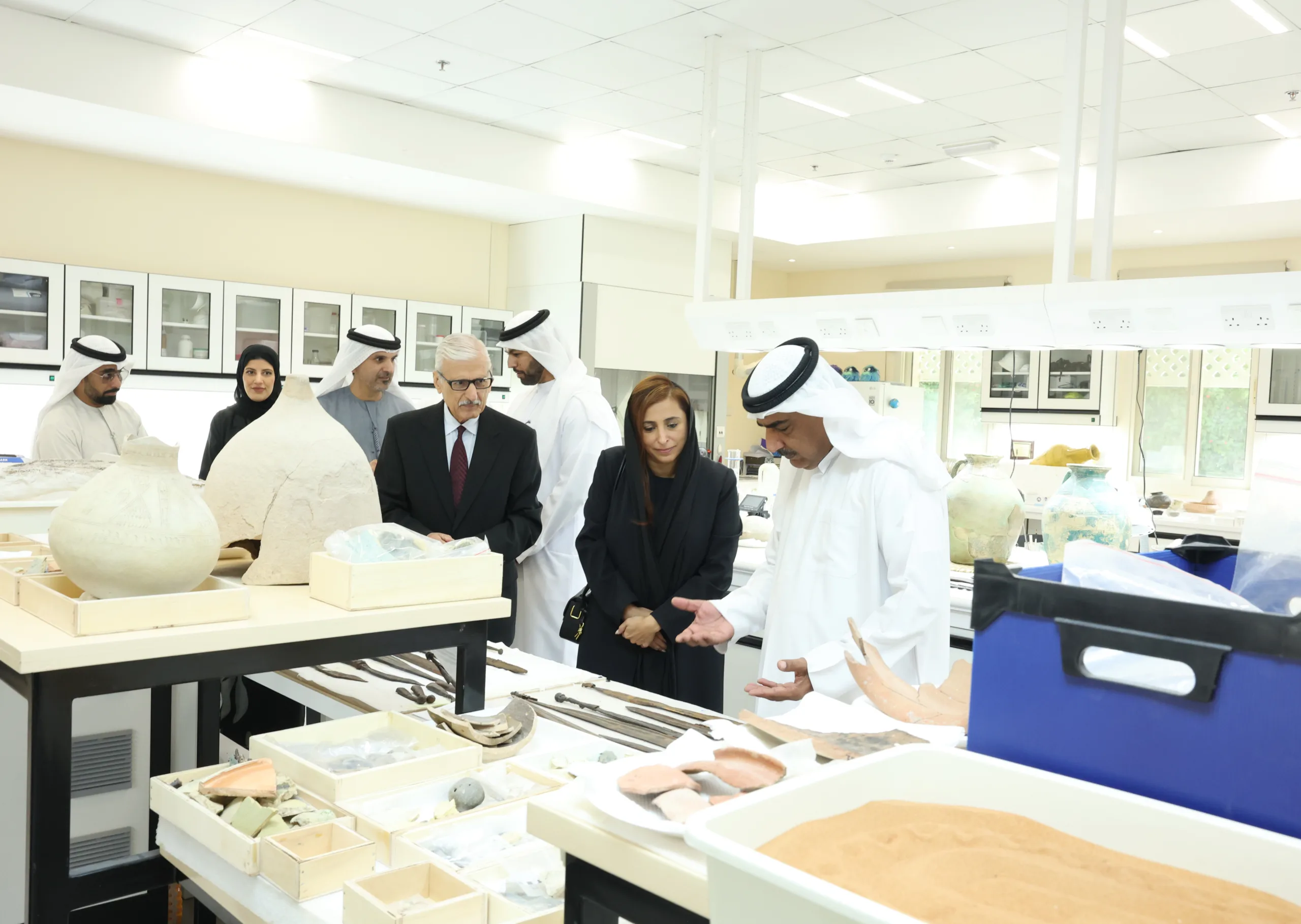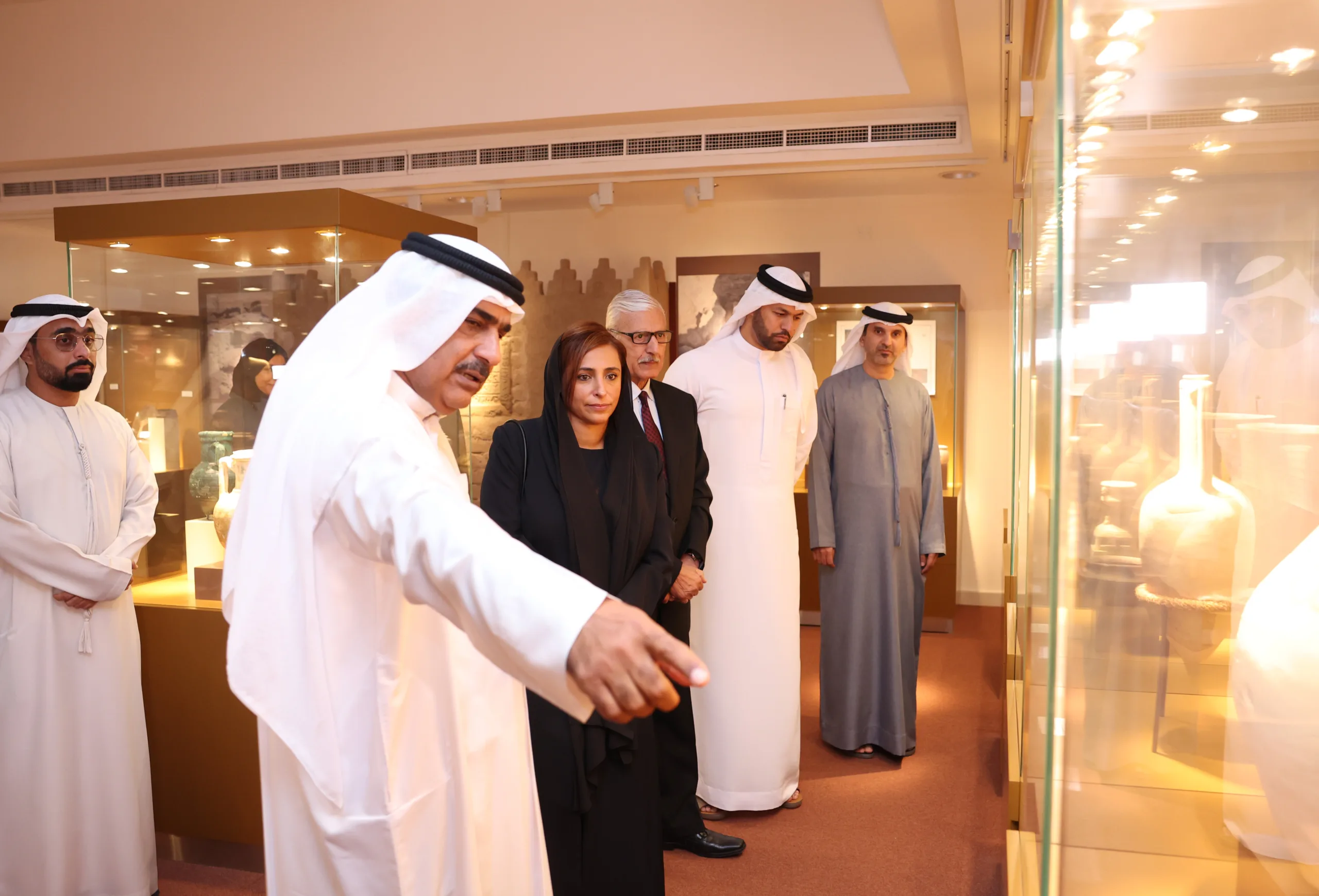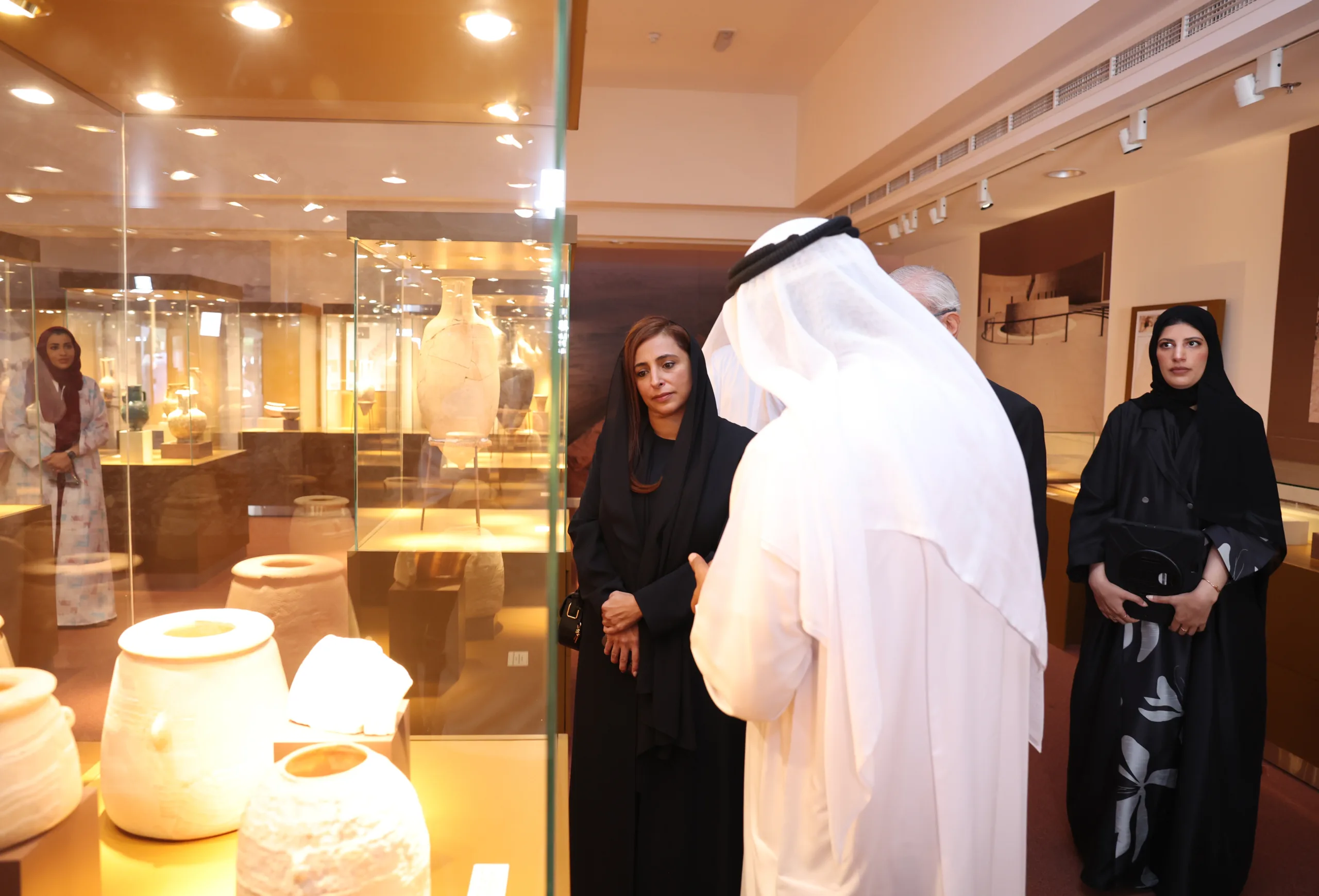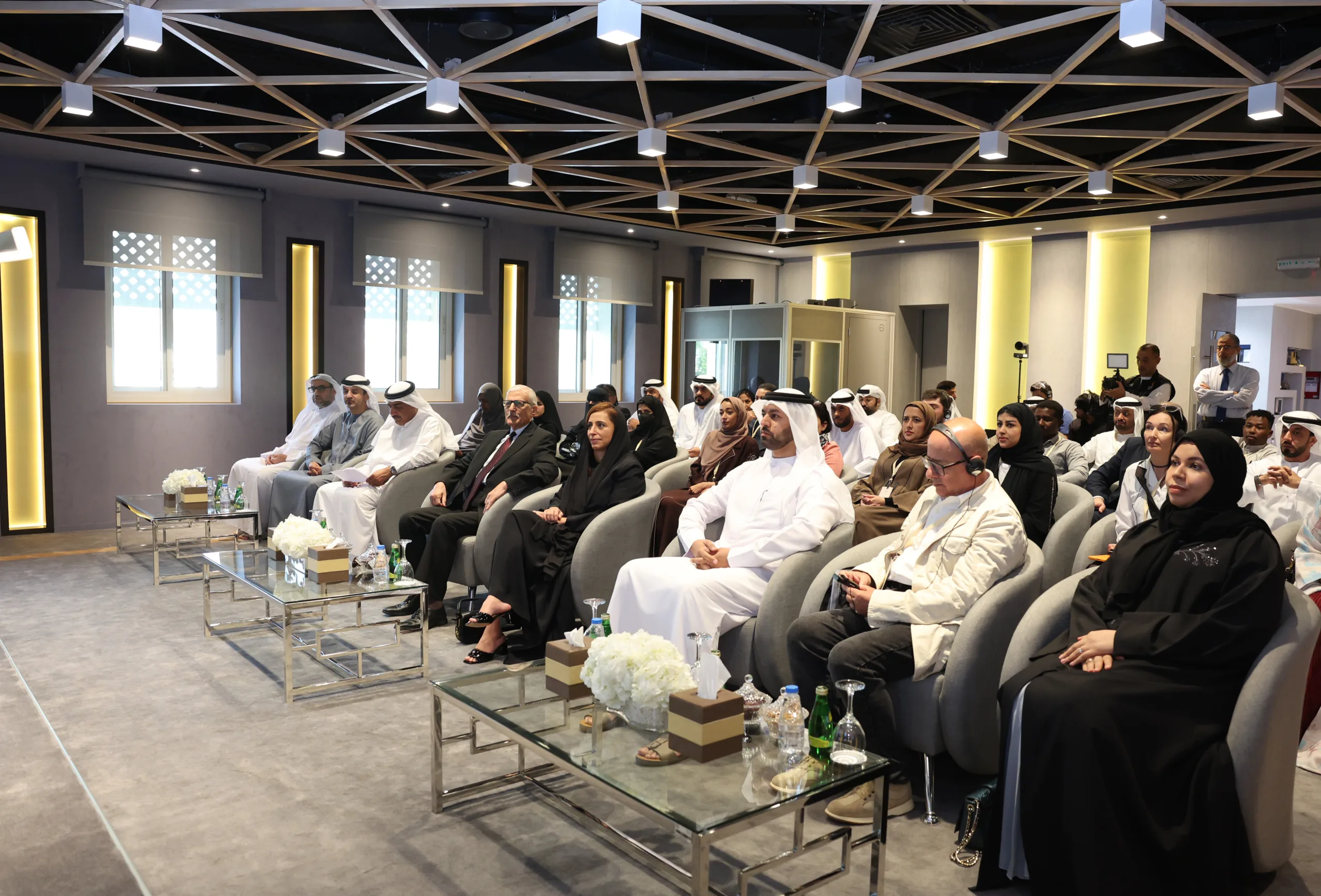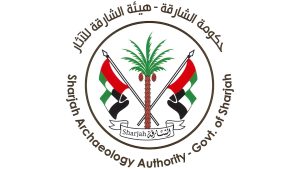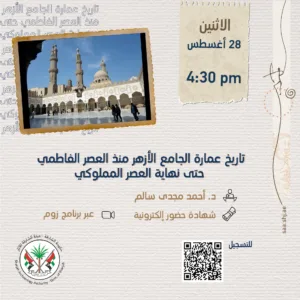During the closing ceremony of the International training course on “Rock Art Recording Techniques, from Traditional to Digital”
Bodour Al Qasimi witnessed the achievement of SAA in conducting the third study of rock engravings in Sharjah
Sheikha Bodour bint Sultan Al Qasimi, Chairperson of Sharjah Investment and Development Authority (Shurooq), witnessed the achievement of the Sharjah Archaeology Authority (SAA) in conducting the third specialized study to inventory and document rock engravings in Sharjah. This included organizing a training course on “Rock Art Recording Techniques , from Traditional to Digital” with the aim of enhancing the efficiency of the SAA’s staff specialized in studying rock engravings and forming a collaborative local team for documentation.
The SAA organized a distinguished closing ceremony for the international training course, attended by His Excellency Eisa Yousif, Director General of the Sharjah Archaeology Authority, His Excellency Salem Omar Salem, Director of the Regional Office of the (ICESCO) in Sharjah, as part of raising awareness about the cultural, material, and civilizational heritage of Sharjah on both the local and global levels.
Sheikha Bodour bint Sultan Al Qasimi, Chairperson of (Shurooq), honored all the experts participating in the organized training course, as well as the trainees and members of the organizing committee. She toured the headquarters of the Sharjah Archaeology Authority, which included a visit to important archaeological discoveries, and a visit to the laboratory for the restoration and maintenance of the discovered artifacts. This provided an introduction to the role of the authority in enriching the archaeological activities of the Emirate of Sharjah and preserving and enhancing Sharjah’s archaeological identity.
The training program was held in collaboration with the Islamic World Educational, Scientific and Cultural Organization (ISESCO) and the Arab Regional Centre for World Heritage in Bahrain over a period of five days from December 17th to 21st, 2023. The programme featured a group of academics from the Footsteps of Man archaeological society in Italy, a member of IFRAO, the International Federation of Rock Art Organizations.
The closing ceremony included a speech by Dr. Angelo Fossati, an expert in rock engravings at the Sacred Heart University in Milan and the President of the International Federation of Rock Art Organizations. He discussed the results of the studies of rock engravings in the Emirate of Sharjah, confirming that the rock engravings in Sharjah are considered the first rock art site discovered in the Hajar Mountains region at the beginning of the last century. The study documents groups of rock art estimated to be hundreds of discovered engravings carved on the rocks of Gabbro at Khatm Al Melaha-Kalba, Al Mudeife, Luluya sites, and Wadi Shie in Khorfakkan.
His Excellency Eisa Yousif, Director General of the Sharjah Archaeology Authority, emphasized the SAA’s great importance in studying rock engravings in line with the directives and vision of His Highness Sheikh Dr Sultan bin Muhammad Al Qasimi, Supreme Council Member and Ruler of Sharjah. He also highlighted the significant role played by rock art as a crucial foundation for our understanding of previous societies in the Arabian Peninsula and as a vast visual archive that can be used to better understand historical, economic, traditional, and religious beliefs among many other aspects of these past societies. Additionally, HE stressed that rock engravings play an important role in showcasing our material cultural heritage and ancient civilization throughout the ages, defining the history of our proud Sharjah and disseminating it through scientific and technological methods.
Sheikh Ibrahim bin Mohamed Al Khalifa deputy director of the Arab Regional Centre for World Heritage in Bahrain, stated: “The international training course on documenting rock art techniques from traditional to digital is one of the important initiatives at the Arab level for the development of Arab capabilities and the enhancement of the work system in the field of documenting rock art and identifying modern techniques in this field. We are pleased at the Arab Regional Centre for World Heritage to partner with the organizing body, the Sharjah Archaeology Authority (SAA), in organizing this course, which confirms the prominent role played by the SAA in developing capabilities not only at the local level but also at the regional level.”
His Excellency Salem Omar Salem, Director of the Regional Office of the (ICESCO) in Sharjah, pointed out that ICESCO is implementing a number of initiatives and programs, holding training courses to build the capacities of the youth, seeking to empower their roles in achieving sustainable development, and enhancing the efficiency of those working in the cultural field. Additionally, it is part of the organization’s strategy to enhance the importance of building mutual cooperation and meaningful partnerships between the two parties, to adopt and implement more effective initiatives and projects in the field of cultural heritage, knowledge, and associated skills. This is the first joint cooperation program between ICESCO and the SAA, and it will be followed by other programs as a confirmation of support for cultural heritage and its protection through capacity building.
Continuity of Rock Art from Early Periods to Modern Times
The estimated time span of these engravings dates back to the fifth millennium BC until a few decades ago, demonstrating the temporal continuity of rock art from early periods to modern times over seven thousand years. The complexity of these engravings and the presence of unique drawings not discovered in other rock engravings in the region indicate the exceptional nature of the rock art collection in the Emirate of Sharjah. Additionally, the rock engravings in Sharjah stand out for the prehistoric human reliance on using detached rocks as platforms for this art, distinct from the fixed rock outcrops.
“Wadi Al Helo” as Evidence of Copper Mining in the Bronze Age in the Arabian Peninsula
Wadi Al Helo provides the first evidence of mining in the southeastern part of the Arabian Peninsula during the transitional period from the Neolithic to the Bronze Age. Archaeological evidence suggests that Wadi Al Helo was part of a large trade network between Bronze Age sites around the Arabian Gulf. Moreover, Wadi Al Helo served as the primary supplier of raw copper to other bronze production sites in the region, such as Tell Abraq, Kalba, and Umm Al Nar.
The expansive rock engravings on the terrain of Wadi Al Helo depict human movement and the transfer of goods through the valley towards the eastern and western coasts. The boat engraving in the depths of the valley and the distinctive engravings of daggers representing the Bronze Age serve as evidence of the site’s relationship with the local and regional trade network.
It is worth mentioning that the SAA registered the rock art sites in Sharjah on the tentative list of UNESCO World Heritage in February 2023, including the sites of rock engravings in Khatm Al Melaha, Khorfakkan, and Wadi Al Helo site, providing evidence of copper mining in the Bronze Age in the Arabian Peninsula.

